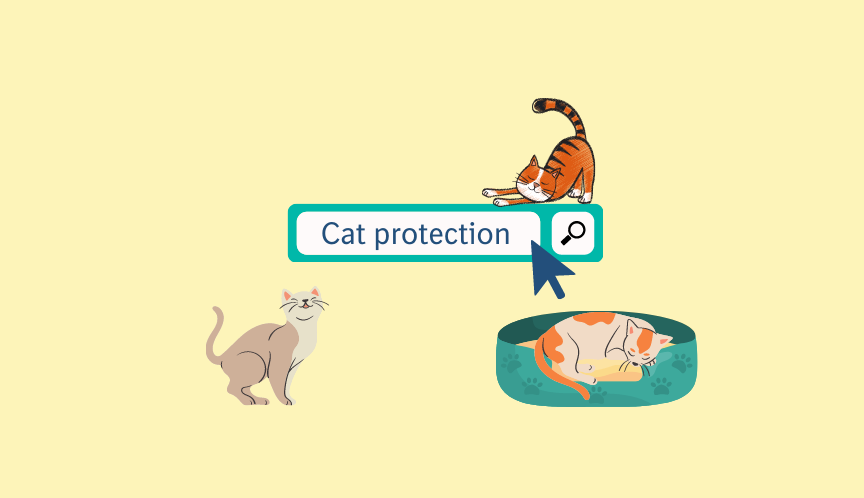The geography of pet parasites is changing
Around the globe, many still think fleas and ticks are the biggest enemies of pets. But rising temperatures are enabling alternative paths for parasitic diseases to reach new areas – either through new hosts like birds or rodents, or even new vectors such as slugs and mosquitoes.
Urbanization, emissions, global warming, climate change. All those words have been in everyone’s minds for the past few years. But have you ever imagined every possible impact of rising temperatures and climate-related hazards? Diseases are arriving in areas where they haven’t been before – like Leishmaniosis for dogs and humans in Western and Northern Europe, transmitted by small biting insects called sandflies. Or the giant tick Hyalomma marginatum, which has travelled across the Mediterranean region with migratory birds, being now installed in Southern Europe and still spreading Northern and Eastern, infesting pets and livestock.
“The geographical distribution of parasitic and vector-borne diseases is changing, and within all possible influencing factors, climate change is proven to be a major risk factor. Shorter winters and warmer temperatures are particularly influential: Northern regions used to be too cold for some tick and flying insect species from the South to multiply and survive. That is different now,” shares Prof. Frederic Beugnet, Head of Technical Services Pet Parasiticides.
Looking beyond flea bites in dogs or cats: new hosts and vectors
Although ectoparasites like ticks are not that mobile by themselves, they can travel long distances with vertebrate hosts. For this reason, bird migration is just one phenomenon to be observed. The shifting scope of animals and organisms that can act as vectors and hosts for pathogens is a significant consequence of climate change – and that means that some of the threats might be present now around every household even in urban areas.
Mosquitoes, for instance, are a source of concern. They act as vectors of several pathogens, and higher temperatures or changes in precipitation standards can modify their distribution. In this scenario, invading species like the Tiger mosquito are spreading all over Europe. It acts as a vector for dengue in humans. In dogs and cats, for heartworm, a growing concern – which was before limited to Southern countries.
“Several species of mosquitoes can bite an infected host and then transmit parasites to humans and animals,” explains Jeroen van der Meer, Senior Technical Service Manager in the Netherlands. “Studies show heartworm disease is spreading across Europe due to the rising temperatures. Until 2011, the disease was not present in many European countries, like Germany, and now it is spreading further and further. In the very near future, it might be probable that we face a heartworm disease season in summer in Northern countries as in the Mediterranean area, but how can we keep our houses free from mosquitoes? Investing in responsible parasitic prevention is the only way to keep animals safe.”
Inoffensive slugs and snails? Think again!
Jeroen has a point. In his home country, the Netherlands, winters are getting milder. And diseases like lungworm infections have been keeping veterinarians busier than ever. The dog lungworm, for instance, is now present in up to five percent of the dogs in the Netherlands. This worm can migrate around the animal’s body to install as adult in respiratory arteries and cause severe lung damage. It can be fatal if left untreated. The hosts of such parasite? Slugs and snails – which can be found in any small inoffensive home garden. The parasite also spreads via snail feces and slime trails. The same trend is observed for cat lungworms.
“Many people think their pets will remain safe if they refrain from walks in forests, for example. But that's completely wrong. Pets can be infected even if they play in our gardens and our homes. We need to make sure people are aware of new risks that weren’t present back a few years ago,” he notes. “The good news is that this awareness is increasing. Pet owners have been more and more confident to embrace responsible antiparasitic protection”.
Always talk to your vet: the best counselor to responsible pet parasite control
Changes in the environment require also changes in behavior. Differently said, embracing responsible parasitic prevention is an imperative need to keep animals – and humans – healthy. Parasites are everywhere. They are as old as their hosts, living together in a coevolution of millions of years. The damage they cause, though, can be controlled, ensuring animal health and welfare through the prevention of regular infestations and the treatment of clinical parasitosis. Always talk to your vet to discuss the best individual options to keep your pets safe.
“With infestations becoming more common, a decrease in parasite control capacity would lead to higher infestation rates, higher clinical observation rates of ectoparasitoses and vector-borne diseases, and higher rates of transmission to humans,” observes Frederic Beugnet. “In other words, we need to protect both our pets and ourselves. We cannot forget that many parasites and vector-borne pathogens are zoonotic. That means they may also harm humans:”

Related Content

Keep your dog free from eyeworms


